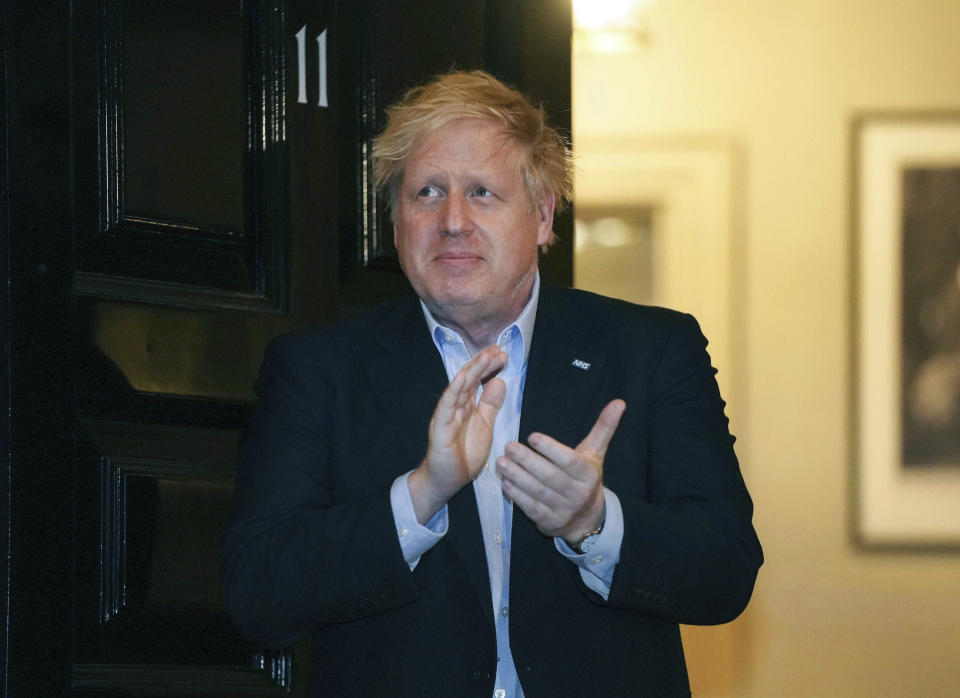The key questions as Boris Johnson is taken to intensive care
Boris Johnson was taken to intensive care on Monday night after his coronavirus symptoms worsened.
The news that the head of the UK government needed to go to critical care left the nation reeling, with messages supporting the prime minister being posted by politicians of all backgrounds online.
But is has led to questions about how bad Johnson’s condition is and what will happen to the government and its response to the coronavirus crisis while he receives treatment.
Why was the prime minister moved to the intensive care ward?
Downing Street said Johnson’s condition “worsened” on Monday afternoon and he was moved to intensive care at St Thomas’ Hospital on the advice of his medical team.
“The PM is receiving excellent care, and thanks all NHS staff for their hard work and dedication,” the spokesman said.

Latest coronavirus news, updates and advice
Live: Follow all the latest updates from the UK and around the world
Fact-checker: The number of COVID-19 cases in your local area
6 charts and maps that explain how COVID-19 is spreading
Johnson was admitted to the hospital on Sunday. He is understood to be conscious and was moved there as a precaution in case he needed a ventilator.
How are coronavirus patients treated in intensive care?
The prime minister could have been given a breathing aid called continuous positive airway pressure (CPAP), an expert has said.
It is a halfway house between giving a patient an oxygen mask and full ventilation, and uses pressure to send air and oxygen into a patient’s mouth at a steady rate.
This boosts the amount of oxygen entering their lungs and helps as their body fights the illness.

Derek Hill, professor of medical imaging at University College London, said many COVID-19 patients move on to invasive ventilation.
This is used for people who have developed such a bad illness they are struggling to breathe, or are unable to.
They are heavily sedated and a tube is guided into their windpipe, and they are fed through a tube which goes through the nose and into the stomach.
Who will lead the government?
Dominic Raab, the foreign secretary and first secretary of state, will stand in for the prime minister “where necessary”, Downing Street said.
The Times reported that Johnson asked for Raab to deputise after it became apparent he would have to move into intensive care.
Raab said: “The government’s business will continue.
“The prime minister is in safe hands with that brilliant team at St Thomas’ hospital, and the focus of the government will continue to be on making sure that the prime minister’s direction, all the plans for making sure that we can defeat coronavirus and can pull the country through this challenge, will be taken forward.”
What happens if Raab should fall ill?
Several members of government have self-isolated in the past two weeks after either testing positive for coronavirus or displaying symptoms.
Besides the prime minister, health secretary Matt Hancock tested positive for the illness while chief medical officer Chris Whitty and Johnson’s senior adviser Dominic Cummings both showed symptoms.

The official spokesman for the prime minister has previously said that if Raab became ill, Johnson can delegate responsibility to any of his ministers.
When was the prime minister taken to hospital?
Johnson went to hospital on Sunday evening following advice from his doctor in what was described as a “precautionary measure”.
He had announced his diagnosis of coronavirus infection on Twitter and continued to run the government while self-isolating in the flat above Number 11 Downing Street.
Another quick update from me on our campaign against #coronavirus.
You are saving lives by staying at home, so I urge you to stick with it this weekend, even if we do have some fine weather.#StayHomeSaveLives pic.twitter.com/4GHmJhxXQ0— Boris Johnson #StayHomeSaveLives (@BorisJohnson) April 3, 2020
The prime minister had been suffering from a high temperature.
On Monday afternoon, Johnson said he had gone to hospital for “routine tests” and was in good spirits.
Was he working when he was ill?
Johnson chaired meetings through video conferencing, including cabinet.
He was seen on Thursday taking part in the clap for carers but appeared noticeably ill.
In a video posted to Twitter on Friday he urged the public not to go out unnecessarily ahead of a weekend of good weather.
Was his fiancée ill?
Among the wave of support for Johnson on Monday night were messages for Carrie Symonds, the pregnant fiancee of the PM.
She said she was “on the mend” after suffering from coronavirus symptoms.
I’ve spent the past week in bed with the main symptoms of Coronavirus. I haven’t needed to be tested and, after seven days of rest, I feel stronger and I’m on the mend.
— Carrie Symonds (@carriesymonds) April 4, 2020
Symonds, who is expecting the couple’s first baby in the summer, said she had been suffering COVID-19 symptoms but is “on the mend”.
Previously, the 32-year-old has shared a photo of her self-isolating in south London with the couple’s dog, Dilyn.

 Yahoo News
Yahoo News 

